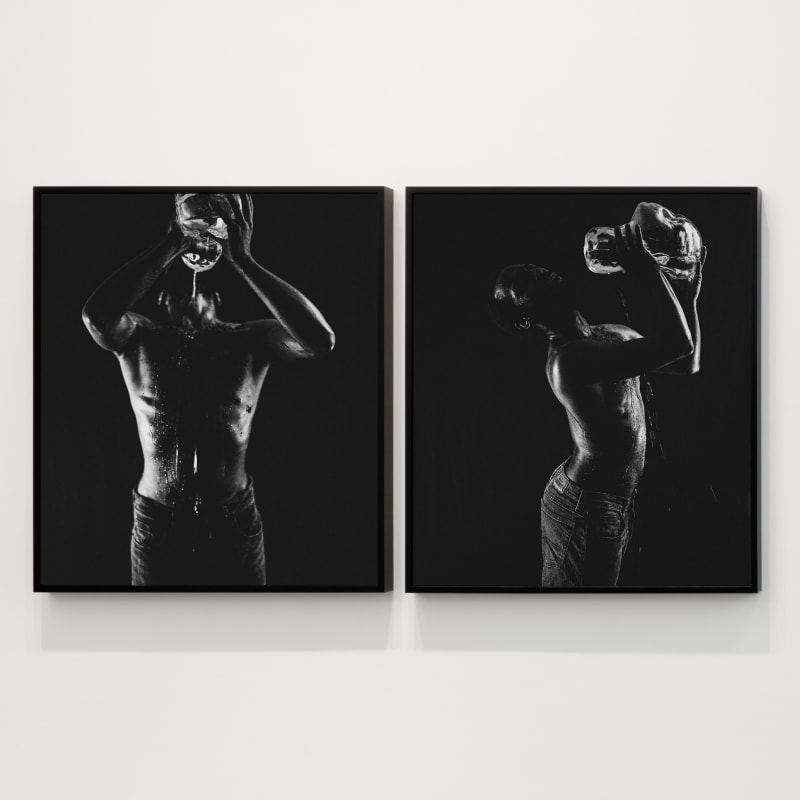Grace is the condition of being blessed. It also describes a certain effortless movement: it is meant to come to us with ease. But for his debut exhibition at Yossi Milo Gallery, multidisciplinary artist Shikeith warns us via the show's title that for Black queer people, "grace comes violently." The gentle yet tense photographs, sculptures, and five-channel video-cum-sculpture work here redefine this quality of ease and divinity with remarkable power.
For the artist, grace is burdened by the past: like a spirit, it can be imperceptible but everywhere. Shikeith's photographs indicate as much: They are cloaked in chiaroscuro, tainted with the shadows of history that continue to haunt the now. In the photographs Visiting Hours, 2022, and A Clearing, 2021, figures move in and out of illumination, their vaporous bodies flickering between a visible world and a spectral domain. The past is revivified not only in tone, but also in color. Deep blacks and browns are accentuated by "haint blue," a hue traditionally used by the Gullah-Geechee people of the southeastern coast of the US to ward off evil spirits. The pigment is derived from crushed indigo plants which, when manually cultivated, can leave a long-lasting stain-like memory, or brutality.
Throughout the exhibition, this ghost color is mixed in with the shades of visceral life and resurrection. In a photographic diptych titled Feeling the Spirit in the Dark, 2021, the process of cleansing and rebirth is suspended in time and multiplied: Captured at two different angles, a man pours water on himself from a jug as the sole officiant of his own baptism. The regenerative power of water runs throughout the exhibition, where skin is slick with sweat. But this attention to the flesh coincides with a hushed interiority. Eyes-those proverbial windows to the soul-are always closed, downcast, or cropped out. Their inner life eludes our sight but grips us at a level of deep feeling, quietly.

